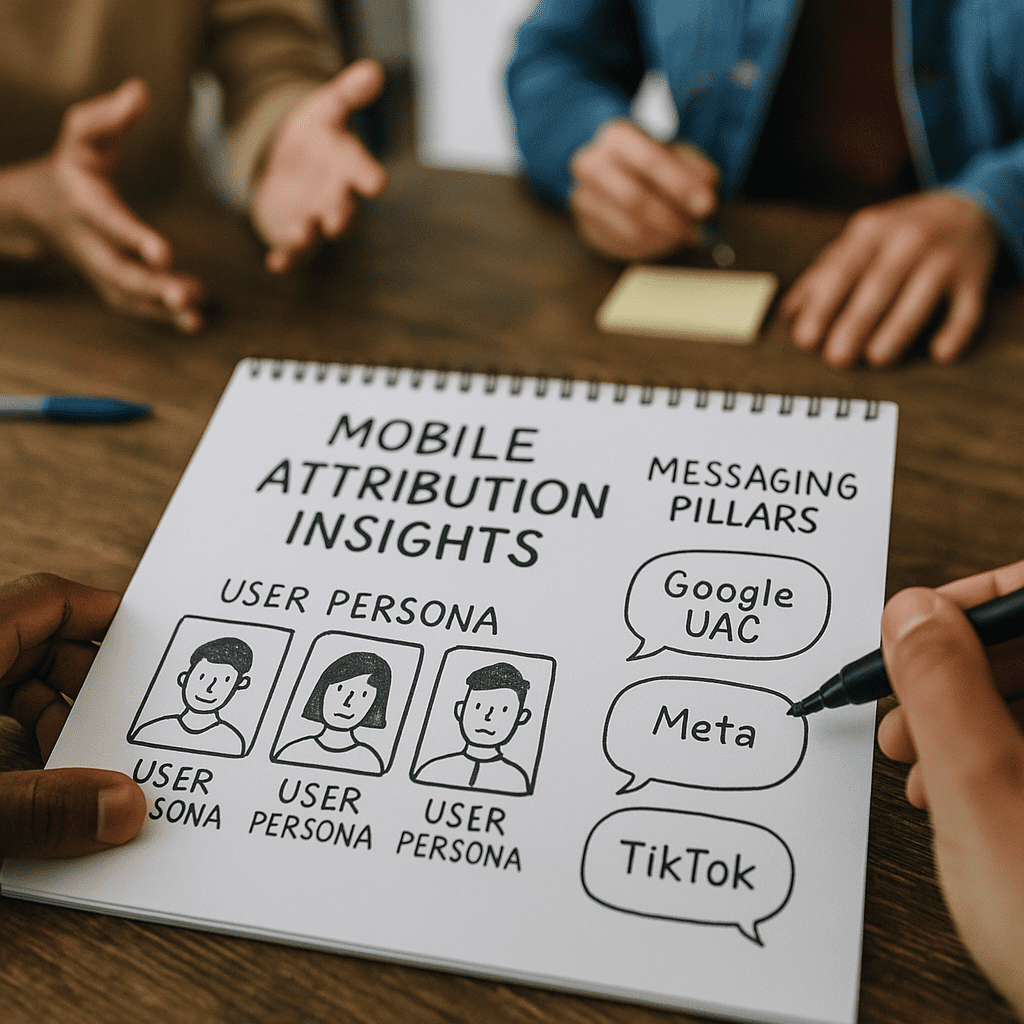
Mobile Attribution Insights: Optimizing App Campaign Budgets Across Google UAC, Meta, and TikTok
In 2025’s fiercely competitive app landscape, precise mobile attribution is the linchpin of efficiency for growth teams. As privacy regulations tighten and user journeys fragment across devices and channels, the ability to pinpoint which ads drive installs, in-app events, and revenue has never been more critical. This guide—crafted by senior growth strategists at a leading app agency—walks you through the mechanics of attribution, key performance metrics, and data-driven strategies for smart budget allocation across the three dominant ad networks: Google UAC, Meta Ads, and TikTok Ads. Follow these best practices to maximize ROI and scale sustainably.
What Is Mobile Attribution and Why It Matters
Mobile attribution connects user actions—impressions, clicks, installs, in-app purchases—to the marketing touchpoints that drove them. Without it, spend becomes guesswork. Growth teams need attribution to:
- Identify high-value channels that deliver quality users with strong retention and monetization metrics.
- Optimize creative performance by understanding which ad formats and copy resonate best with target segments.
- Balance spend between upper-funnel branding and lower-funnel performance to support long-term ROI and scale.
In a post-ATT world on iOS and with Google phasing out third-party cookies, first-party and aggregated attribution data is the new gold standard. Teams that master it gain a sustainable edge in user acquisition (UA) and LTV optimization.
How Mobile Attribution Works: Core Components
Attribution platforms capture the end-to-end user journey by integrating with ad networks, SDKs, and analytics suites. Leading solutions now deliver three key capabilities:
1. Cross-Device and Cross-Channel Tracking
Users switch between desktop, mobile web, and apps. Attribution solutions stitch these sessions together using deterministic identifiers (IDFA, GAID) and probabilistic modeling to provide a holistic view of touchpoints.
2. Comprehensive Event Tracking
Beyond installs, track in-app events—registrations, tutorial completions, subscriptions, purchases—to measure true engagement and revenue contribution. This data feeds LTV models and informs bid strategies.
3. Multi-Touch Attribution Models
Single-touch (last-click) models under-report the influence of upper-funnel and assistive channels. Multi-touch approaches—linear, time decay, position-based—allocate credit across the entire conversion path, highlighting the full value of each platform.
Teams leveraging these capabilities can accurately measure the impact of Google UAC, Meta Ads, and TikTok Ads campaigns—and optimize spend in real time.
Key Metrics for Attribution Analysis
To turn raw data into actionable insights, monitor these core metrics:
- Click-through Rate (CTR): Indicates creative relevance and targeting precision. Low CTR may signal ad fatigue or misaligned audiences.
- Cost per Install (CPI): Baseline measure of media efficiency. Compare CPI across networks to spot over- or under-spend.
- Retention Rate (D1, D7, D30): Quality indicator. A low D7 retention on a high-install channel erodes ROI.
- Average Revenue per User (ARPU): Combines install quality and monetization health—critical for LTV forecasting.
- Assisted Conversions: Shows how one channel supports conversions on another, guiding holistic mix optimization.
By mapping these metrics against budget and creative variations, growth teams can swiftly reallocate spend toward the highest-performing levers.
Comparing Google UAC, Meta Ads, and TikTok Ads
Each ad network brings distinct strengths, costs, and user profiles. A balanced UA mix leverages these differences.
| Platform | CPI Range | Primary Audience | Strength | Ideal Use Case |
|---|---|---|---|---|
| Google UAC | $2.50–$5.00 | High-intent searchers & Android users | Intent-based targeting via Search, YouTube, Play Store | Direct response, subscription sign-ups |
| Meta Ads | $1.00–$3.00 | Diverse demographics (iOS & Android) | Rich audience targeting & advanced lookalikes | Retention-driven campaigns, social proof |
| TikTok Ads | $1.50–$4.00 | Gen Z and Millennial cohorts | High engagement, viral potential | Brand awareness, rapid scale testing |
As a rule of thumb:
- Lean into Google UAC for users actively searching your category or browsing app stores.
- Use Meta Ads to nurture and re-engage users with personalized offers.
- Deploy TikTok Ads for creative, trend-driven campaigns that fuel viral loops.
Best Practices for UA Budget Allocation in 2025
Crafting a resilient UA budget mix requires balancing automation with strategic testing:
1. Embrace Machine-Learning Automation (70–80%)
- Activate Google’s UAC auto-bidding, Meta Advantage+, and TikTok Smart Bidding to optimize bids, budgets, and placements in real time.
- Leverage dynamic creative optimization (DCO) to automatically swap and test headlines, visuals, and calls to action.
2. Reserve Manual Budget for Innovation (20–30%)
- Test new creative formats, emerging geos, and niche audiences outside the algorithmic core.
- Run bespoke A/B tests on copy, video length, and interactive ad units to unlock fresh growth pockets.
3. Implement Incrementality and MMM
- Use holdout groups and geo experiments to measure true lift and avoid over-attribution.
- Complement digital attribution with Media Mix Modeling to capture offline and brand effects.
4. Establish a Dynamic Review Cadence
- Conduct daily health checks for spend anomalies and creative fatigue.
- Hold weekly deep dives on retention and ARPU by channel, feeding insights back into bid strategies.
By blending automation’s scale with manual experimentation and rigorous incrementality testing, performance teams can fine-tune budget allocation for sustained ROI improvement.
Emerging Trends Shaping Mobile Attribution
As we move deeper into 2025, several developments will redefine attribution and UA:
- First-Party Data Dominance: Brands are investing in cookieless, privacy-compliant frameworks—server-to-server integrations and clean rooms—to safeguard data and maintain attribution fidelity.
- AI-Driven Creative Personalization: Generative AI automates asset production, delivering tailored messages at scale and accelerating creative testing cycles.
- Privacy-Centric Measurement: Solutions like Google’s Privacy Sandbox and Apple’s SKAdNetwork 4.0 are enabling aggregated reporting without compromising user trust.
- Holistic LTV Forecasting: Predictive models powered by machine learning replace static ROAS goals, ensuring budgets align with projected long-term value.
Staying ahead of these trends ensures your UA strategy remains resilient and insight-driven as the ecosystem evolves.
Conclusion and Next Steps
Mastering mobile attribution and intelligent budget allocation across Google UAC, Meta Ads, and TikTok Ads is non-negotiable for app marketers aiming to drive sustainable growth. By combining robust attribution platforms, clear metric frameworks, and a balanced mix of automation and manual testing, you’ll unlock higher ROI and deeper insights into user behavior.
For detailed case studies, expert playbooks, and advanced performance marketing strategies, visit the Admiral Media Blog. Ready to elevate your next app campaign? Contact Admiral Media to partner with our CMO-led team on tailored growth solutions.
